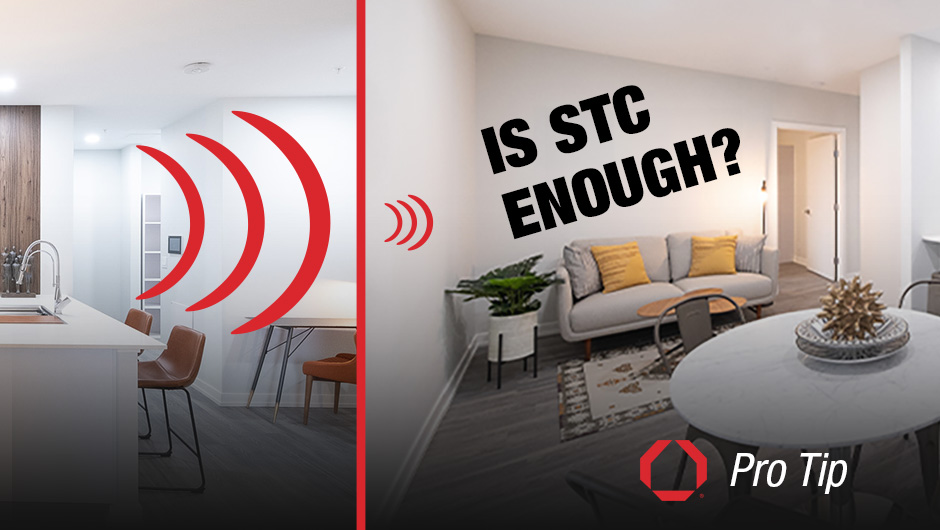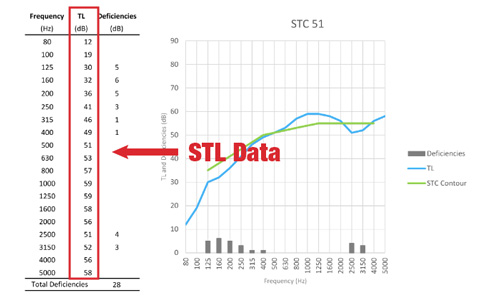The Newsroom
PABCO PRO Tip: Is STC Enough for Top-Tier Sound Control? ️


By Ben Shafer,
PABCO Technical Services Manager-Acoustic Systems
The Sound Transmission Class (STC) rating system for building partitions was adopted into our building codes and architectural designs because it is a relatively easy metric to understand and put in place. The higher the STC, the “better” the assembly related to sound isolation and noise control. Unfortunately, as our industry has innovated and developed a more diverse range of products and assemblies for sound isolation performance, the STC rating system has not grown along with these changes. Products such as constrained layer damped (CLD) panels affect the sound isolation of building partitions in ways that the STC rating does not detect. CLD panels vastly improve the mid- to high-frequencies that are important for speech privacy, but because the STC rating is so sensitive to low-frequency noise this metric isn’t sufficient to show these improvements.

It is important, when designing for sound isolation, to look further than the STC rating. Test reports from laboratories that follow ASTM International reporting procedures will include not just the STC rating, but the Sound Transmission Loss (STL) performance as well. When treating for sound isolation, the best practice is to hire an acoustical engineer or consultant and then take a look at the full test report with your consultant to determine optimum assemblies and treatments for your sound isolation goals. The STC rating alone may not be the metric you are looking for, for example, if you are primarily concerned with speech privacy. Find a consultant and take a deeper dive into the STL performance for better acoustic treatment and sound isolation design.
For more information on this topic, contact our Technical Support team.
Phone: 800.797.8159 Email: info@quietrock.com
